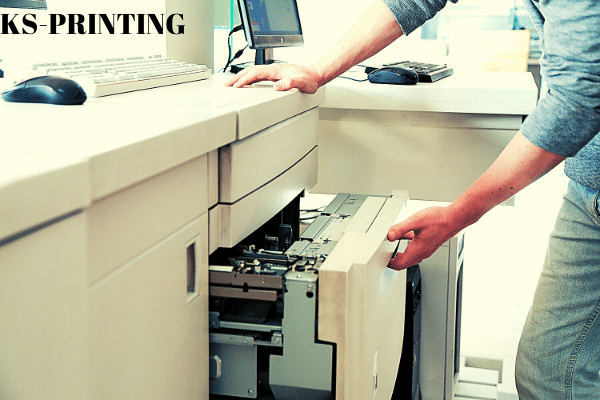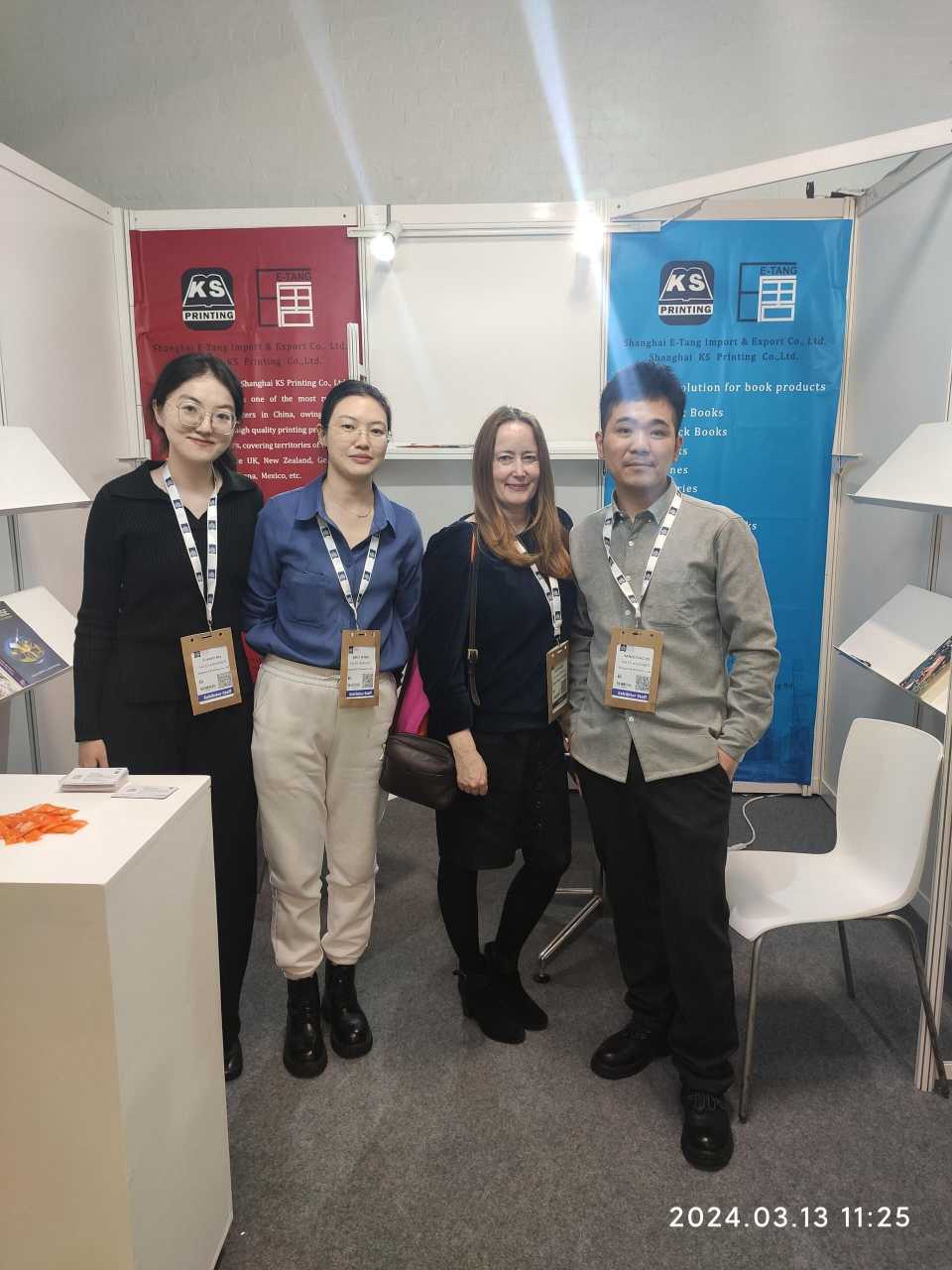Call Us
+86-021-54700256
Email Us
info@shksprinting.com
What is the difference between digital printing and traditional printing?|KSprinting
2021-04-20
What is digital printing?
Digital printing is the digital graphic information recorded directly onto the substrate for printing. This means that the input is a digital stream of visual communication, and the output is also a digital stream of visual information. It is important to emphasize that it is on-demand, plateless printing and similar to traditional printing.
At present, the publisher's book varieties are increasing significantly. The printing volume of single-variety books is decreasing, and the use of traditional printing, the smaller the print run, the higher the cost, and cannot adapt to the production and sale of niche books. Simultaneously, with the continuous development of society and the advent of the information age, personalized publishing is growing. For example, customized textbooks, collections of papers and monographs rich in academic significance but with low sales, etc., emerge from school teaching reform. The emergence of digital printing has solved many of the problems of publishers.
The industrialized book production model makes it challenging to fulfil the unique needs of "publishing services" and "printing services". Also, traditional printing and publishing methods have resulted in a large amount of printing and a large amount of inventory, leading to a severe waste of resources and energy, making publishers less and less economically efficient and not in line with national environmental requirements protection.
Digital printing is coming to the forefront for publishers, providing the technical prerequisites to significantly reduce book inventories and meet the current publishing market's needs. Digital printing is the direct printing of computer files on paper, simplifying traditional printing's tedious process. Its advantages are evident in rush printing, variable printing, and on-demand printing. It does not require the tedious process of conventional offset printing and requires a computer to send the file to the press to produce the finished product.
Digital printing digitizes the entire production process and reorganizes the editing, printing and publishing, and distribution chain to achieve sales first, printing later, and zero inventory of books. This saves energy and reduces waste, truly realizing "green publishing". Simultaneously, with the continuous improvement and perfection of digital printing technology and quality, digital printing will also promote the transformation of book publishing mode, the traditional way of reading, and modern information network technology combined organically.
Traditional printing steps.
Scanning colour separation/text acquisition → graphic processing → miniature version of the film → manual spells large version → sunshine plate → mechanical proofing → examination → sunshine plate → printing → finished products.
Digital printing steps.
Scanning colour separation/text acquisition → graphic processing → digital spelling large plate → digital proofing → verification → digital spelling large plate → CTP → printing → finished product.
(2). Flexible and efficient. The complete digitalization of digital printing can provide more flexible printing methods, i.e., change as you print, use more printers to print more minor, and achieve zero inventory. This flexible and fast printing method enhances the customer's advantage in the competitive environment where every second count.
(3). No starting print run. Digital printing does not require a "starting print run" and can achieve one print run requirement and immediate availability.
Digital printing is the industry is optimistic about but rarely really successful production methods. In the face of the increasingly competitive environment, many printing companies throw themselves into digital printing, in the spirit of the only way to boldly innovate out of a road that has never been taken before, it is possible to break out of the siege and become the leader of digital printing.
The perfect integration of traditional processes and digital printing workflow: through the development and integration of ERP and production management platforms, traditional booklet printing enterprises can enter a unified production process for orders as small as a few books or dozens of books or as large as tens of thousands or hundreds of thousands of books, to achieve high-efficiency, low-cost order management, production management, and cost accounting, so that enterprises have both the capacity and This allows companies to have the ability and throughput of a large printing enterprise, but at the same time have the refinement, flexibility, and convenience of a small to medium-sized printing enterprise.
What is CTP imaging technology? Click to learn →CTP
If you are interested inbooklet printing, please click through our industrynews, which may help you.
We'll be happy to help you solve your printing challenges;click Contact Us.
Digital printingis a new type of printing technology that uses a prepress system to transfer graphic information directly to a digital printing press through the network. A digital printing system consists mainly of a prepress system and digital media. Some plans are also equipped with bindery and cutting equipment.
Digital printing is the digital graphic information recorded directly onto the substrate for printing. This means that the input is a digital stream of visual communication, and the output is also a digital stream of visual information. It is important to emphasize that it is on-demand, plateless printing and similar to traditional printing.
At present, the publisher's book varieties are increasing significantly. The printing volume of single-variety books is decreasing, and the use of traditional printing, the smaller the print run, the higher the cost, and cannot adapt to the production and sale of niche books. Simultaneously, with the continuous development of society and the advent of the information age, personalized publishing is growing. For example, customized textbooks, collections of papers and monographs rich in academic significance but with low sales, etc., emerge from school teaching reform. The emergence of digital printing has solved many of the problems of publishers.
The industrialized book production model makes it challenging to fulfil the unique needs of "publishing services" and "printing services". Also, traditional printing and publishing methods have resulted in a large amount of printing and a large amount of inventory, leading to a severe waste of resources and energy, making publishers less and less economically efficient and not in line with national environmental requirements protection.
Digital printing is coming to the forefront for publishers, providing the technical prerequisites to significantly reduce book inventories and meet the current publishing market's needs. Digital printing is the direct printing of computer files on paper, simplifying traditional printing's tedious process. Its advantages are evident in rush printing, variable printing, and on-demand printing. It does not require the tedious process of conventional offset printing and requires a computer to send the file to the press to produce the finished product.

What is the impact of digital printing on the editing,printing, and haircutting process?
Digital printing digitizes the entire production process and reorganizes the editing, printing and publishing, and distribution chain to achieve sales first, printing later, and zero inventory of books. This saves energy and reduces waste, truly realizing "green publishing". Simultaneously, with the continuous improvement and perfection of digital printing technology and quality, digital printing will also promote the transformation of book publishing mode, the traditional way of reading, and modern information network technology combined organically.
Traditional printing steps.
Scanning colour separation/text acquisition → graphic processing → miniature version of the film → manual spells large version → sunshine plate → mechanical proofing → examination → sunshine plate → printing → finished products.
Digital printing steps.
Scanning colour separation/text acquisition → graphic processing → digital spelling large plate → digital proofing → verification → digital spelling large plate → CTP → printing → finished product.
It can be seen that digital printing has the following three advantages in the production process.
(1). Convenience and speed. Digital printing has absolute advantages in a small amount of printing and urgent pieces because it eliminates the tedious filming, plate piercing, and plate tanning process. All the electronic documents generated by the typesetting, design software, and office applications can be directly output to the digital press.(2). Flexible and efficient. The complete digitalization of digital printing can provide more flexible printing methods, i.e., change as you print, use more printers to print more minor, and achieve zero inventory. This flexible and fast printing method enhances the customer's advantage in the competitive environment where every second count.
(3). No starting print run. Digital printing does not require a "starting print run" and can achieve one print run requirement and immediate availability.
Technically speaking, what is the difference between traditional printing and digital printing?
Digital printing has a shorter plate-making time, allowing for more economical printing of short runs and even the flexibility to print from a single sheet. This determines that its primary market and development direction lies in the "on-demand printing" characterized by personalized printing, variable data printing, and just-in-time printing. At the same time, at least in the short term, traditional printing in its expertise in the field of high-volume printing still has a substantial advantage of digital printing can not shake. This shows that digital printing's role is to fill the market gap caused by the technical characteristics of traditional printing, and its printing company market positioning is different and complementary to conventional printing.Digital printing is the industry is optimistic about but rarely really successful production methods. In the face of the increasingly competitive environment, many printing companies throw themselves into digital printing, in the spirit of the only way to boldly innovate out of a road that has never been taken before, it is possible to break out of the siege and become the leader of digital printing.
The perfect integration of traditional processes and digital printing workflow: through the development and integration of ERP and production management platforms, traditional booklet printing enterprises can enter a unified production process for orders as small as a few books or dozens of books or as large as tens of thousands or hundreds of thousands of books, to achieve high-efficiency, low-cost order management, production management, and cost accounting, so that enterprises have both the capacity and This allows companies to have the ability and throughput of a large printing enterprise, but at the same time have the refinement, flexibility, and convenience of a small to medium-sized printing enterprise.
What is CTP imaging technology? Click to learn →CTP
If you are interested inbooklet printing, please click through our industrynews, which may help you.
We'll be happy to help you solve your printing challenges;click Contact Us.
X
We use cookies to offer you a better browsing experience, analyze site traffic and personalize content. By using this site, you agree to our use of cookies.
Privacy Policy








































